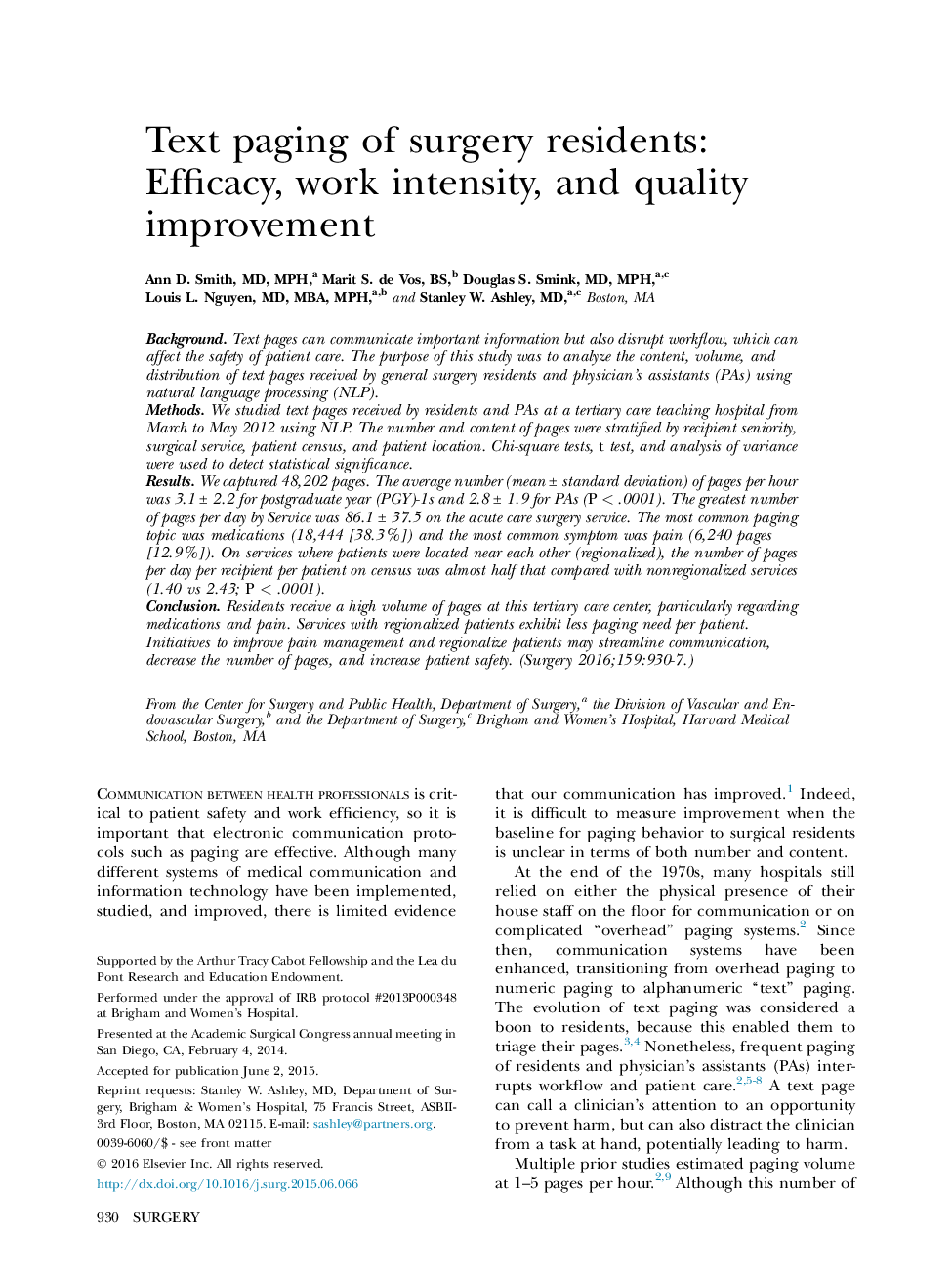| Article ID | Journal | Published Year | Pages | File Type |
|---|---|---|---|---|
| 4306825 | Surgery | 2016 | 8 Pages |
BackgroundText pages can communicate important information but also disrupt workflow, which can affect the safety of patient care. The purpose of this study was to analyze the content, volume, and distribution of text pages received by general surgery residents and physician's assistants (PAs) using natural language processing (NLP).MethodsWe studied text pages received by residents and PAs at a tertiary care teaching hospital from March to May 2012 using NLP. The number and content of pages were stratified by recipient seniority, surgical service, patient census, and patient location. Chi-square tests, t test, and analysis of variance were used to detect statistical significance.ResultsWe captured 48,202 pages. The average number (mean ± standard deviation) of pages per hour was 3.1 ± 2.2 for postgraduate year (PGY)-1s and 2.8 ± 1.9 for PAs (P < .0001). The greatest number of pages per day by Service was 86.1 ± 37.5 on the acute care surgery service. The most common paging topic was medications (18,444 [38.3%]) and the most common symptom was pain (6,240 pages [12.9%]). On services where patients were located near each other (regionalized), the number of pages per day per recipient per patient on census was almost half that compared with nonregionalized services (1.40 vs 2.43; P < .0001).ConclusionResidents receive a high volume of pages at this tertiary care center, particularly regarding medications and pain. Services with regionalized patients exhibit less paging need per patient. Initiatives to improve pain management and regionalize patients may streamline communication, decrease the number of pages, and increase patient safety.
